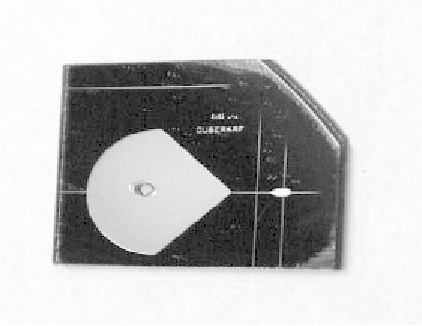Biomedical Engineering Reference
In-Depth Information
Figure 9.6
The main chamber is the white sector at the top of the figure; the fluid entrance is the
round circle. The concentration chamber is located at the bottom. (Courtesy Biomerieux/LETI.)
they diffuse in the large volume and bind to the targets on contact. After a bind-
ing time, magnetic force is used to concentrate the beads in a small chamber. The
chemical linking of magnetic beads and targets can be broken if some conditions
are changed in the chamber, for example an increase in the temperature. Finally,
the magnetic beads are removed and the targets are concentrated in the detection
chamber.
A realization of such a microsystem is shown in Figure 9.6.
Note that in the realization of such a device, in order to achieve a satisfactory
design, a careful modeling of the trajectories and concentration of the beads has
been performed. Modeling of magnetic beads motion will be presented later in this
chapter.
9.1.4 The Question of the Size of the Magnetic Beads
A recurring question is to decide what type of magnetic bead is the most adapted to
the problem one has to solve. Most of the time it is the smaller beads that are used,
because even if the magnetic traction exerted is weak, they have the property to be
dispersed by Brownian motion as soon as the magnetic field is shut down (Figure 9.7).
Figure 9.7
Dispersion under Brownian effect of small-sized magnetic beads in a liquid drop.
(Courtesy D. Massé, LETI.)



